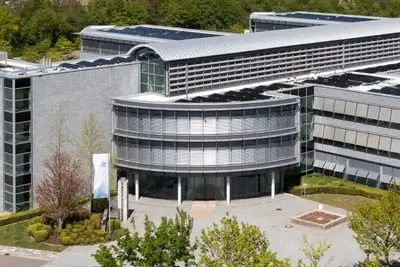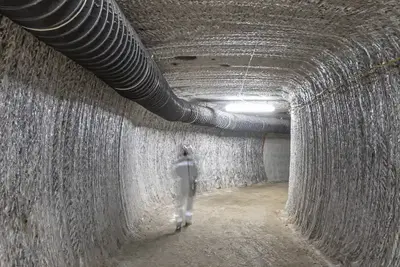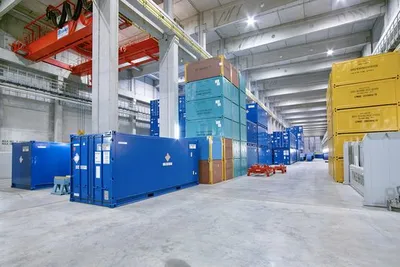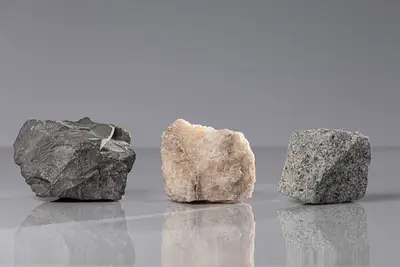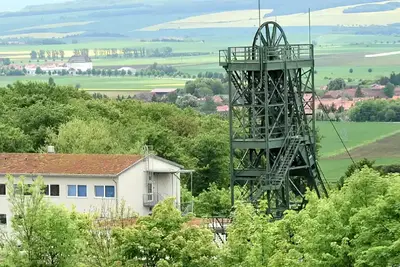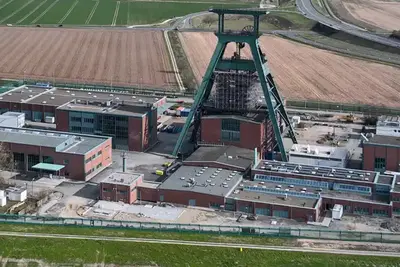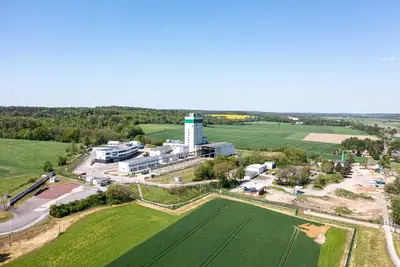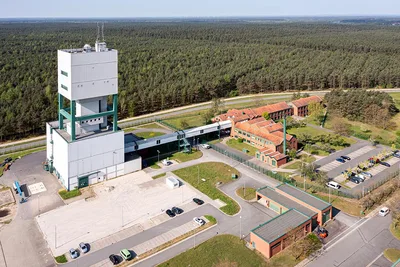Radioactive waste in the Morsleben repository
During emplacement operations, almost 37,000 cubic metres of low- and intermediate-level radioactive waste were placed in final disposal. Around 60% of the waste currently in final disposal was brought underground after reunification. This waste contains 40% of the emplaced radioactivity. The radioactive waste originates predominantly from the operation of nuclear power plants as well as from the decommissioning of nuclear facilities. Typical waste includes evaporated and solidified radioactive liquids, filters, scrap metal, paper, laboratory waste, building rubble, slurries and mixed waste.
Emplacement areas and methods
The radioactive waste placed in final disposal is located around 480 metres below ground level in the vicinity of the fourth level of the Bartensleben mine. This waste was largely emplaced using the stacking method, as well as by dipping and dumping. Liquid waste was solidified on-site.
The emplacement areas are as follows:
- Northern field: In the northern field, low-level radioactive waste with a total volume of 1,701 cubic metres was placed in final disposal using the stacking method between 1971 and 1981.
- Western field: This is where the most waste is stored, with a waste volume of 18,637 cubic metres. Solid low-level radioactive waste was emplaced here using the stacking method from 1974 to 1991 and from 1994 to 1998. Smaller quantities of operational radioactive waste that arises on-site are still placed in final disposal in the western field today.
- Southern field: A total volume of 10,119 cubic metres were placed in final disposal in the southern field from 1978 to 1991 and from 1994 to 1998. The solid and liquid low- and intermediate-level radioactive waste, along with enclosed radiation sources, was predominantly disposed of by the dipping technique, but liquid low-level radioactive waste was also solidified in situ – that is, directly within the emplacement area – between 1978 and 1991.
- Central section: In the central section, low-level radioactive waste with a total volume of 157 cubic metres was emplaced between 1983 and 1990. The solid and liquid waste, as well as enclosed radiation sources, were stacked, solidified on-site, or dumped.
- Eastern field: Following the reunification of Germany, the eastern field was used for emplacement between 1997 and 1998. In total, 6,140 cubic metres of solid low-level radioactive waste were stacked here.
Waste placed in interim storage
In addition to the radioactive waste placed in final disposal, there is also a small quantity of waste in interim storage. This accounts for less than 0.01% of the total volume of waste but around 60% of the repository’s emplaced radioactivity. This stems from enclosed radiation sources stored in the “underground measuring field”. Medical radium preparations were also placed in interim storage after being packaged in a manner suitable for storage and finally equipped with concrete shielding. The concrete container is stored in a deep borehole at the main cross-cut (near the eastern field).
As a result of the long half-life of 1,600 years (radium-226), the radium preparations had an unchanged radioactivity of 3.7 • 1011 becquerels (370 billion decays of atomic nuclei per second) at the end of 2019. The radioactivity of the enclosed radiation sources (above all cobalt-60) was still 1.2 • 1014 becquerels (120 trillion decays of atomic nuclei per second) at the end of 2019, which corresponds to around a 20th of the original radioactivity at the time of emplacement.
The radioactive waste placed in interim storage does not meet the waste acceptance criteria for final disposal as set out in the permanent operating licence. Interim storage is licensed on a fixed-term basis by the competent licensing authorities, and an application has been made for the final disposal of this waste within the framework of decommissioning. As part of this process, the risk of exposing people to ionising radiation is to be kept as low as possible in accordance with the minimisation requirement in the context of radiation protection. Transport to an interim storage facility or a federal state collecting depot for radioactive waste would not lead to an improvement in safety.
Radioactivity of emplaced waste
Waste with a total radioactivity of 3.2 • 1015 becquerels (3.2 thousand trillion decays of atomic nuclei per second) has been stored in the Morsleben repository. Due to radioactive decay, the radioactivity had fallen to 2.0 • 1014 becquerels (200 trillion decays of atomic nuclei per second) at the end of 2019. Around 60% of this was due to the waste currently held in interim storage.
The total radioactivity within the Morsleben repository currently corresponds to about a 2,000th of the radioactive content of a Castor container (type V/19 – 96 design containing a typical load). The estimation of the repository’s hazard potential depends not only on the emplaced radioactivity of the waste, but also on which substances are emplaced and what harmful effects they can have on living organisms. Within the framework of the repository’s decommissioning, it must be ensured that the legal safety objectives are adhered to – including in the long term.
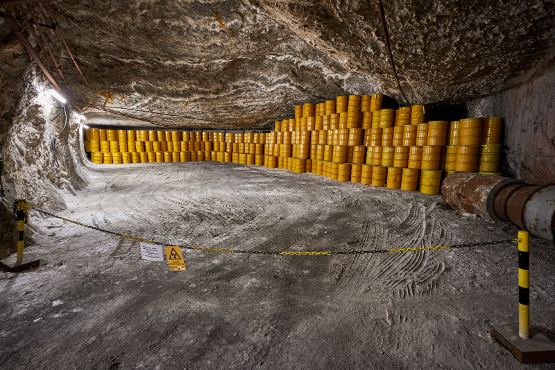
Operational waste that arises on-site is seen in the western field on the fourth level of the Morsleben repository.
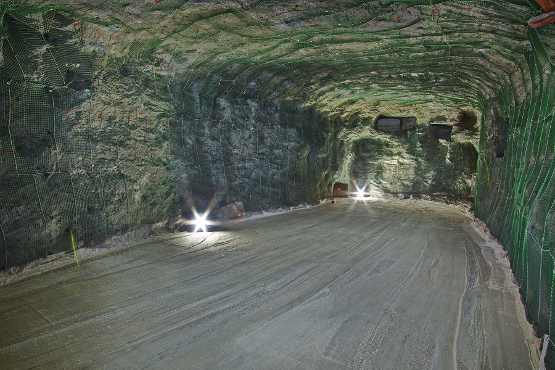
Radioactive waste was emplaced in the eastern field between 1994 and 1998. Today, the waste is covered with salt.
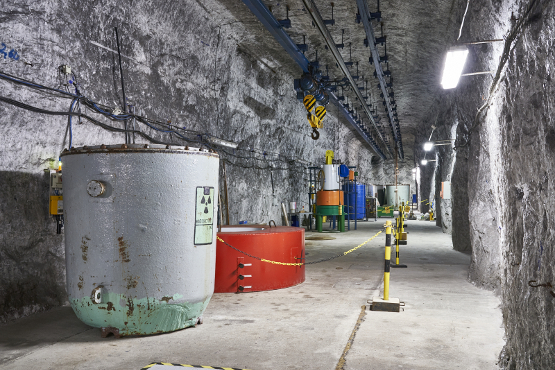
Among other things, intermediate-level cobalt-60 radiation sources were placed in interim storage in special boreholes within the underground measuring field.

